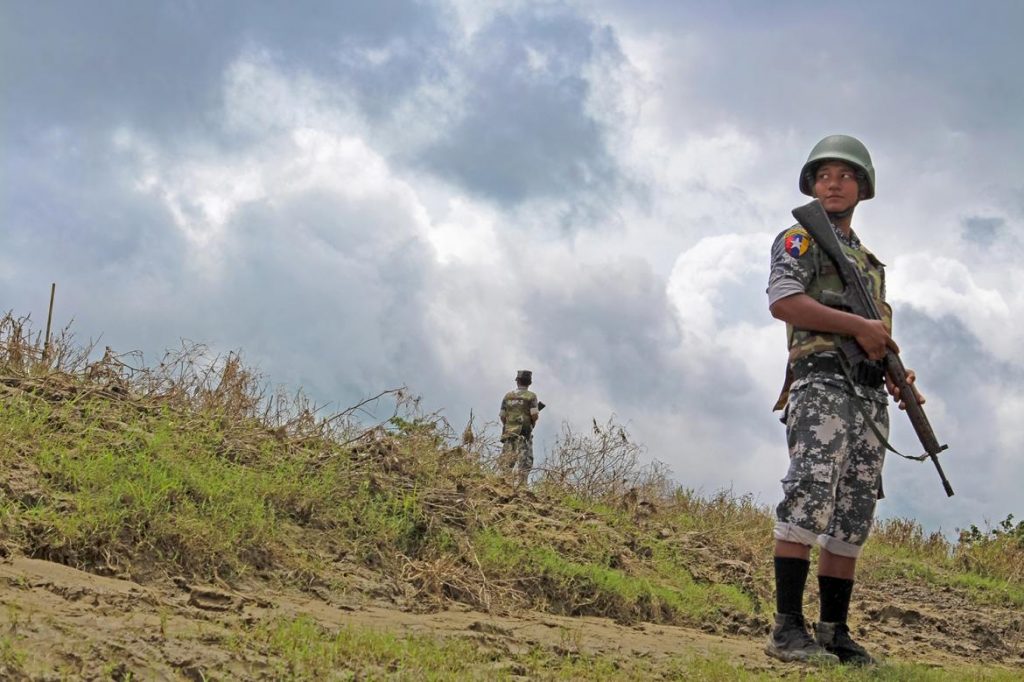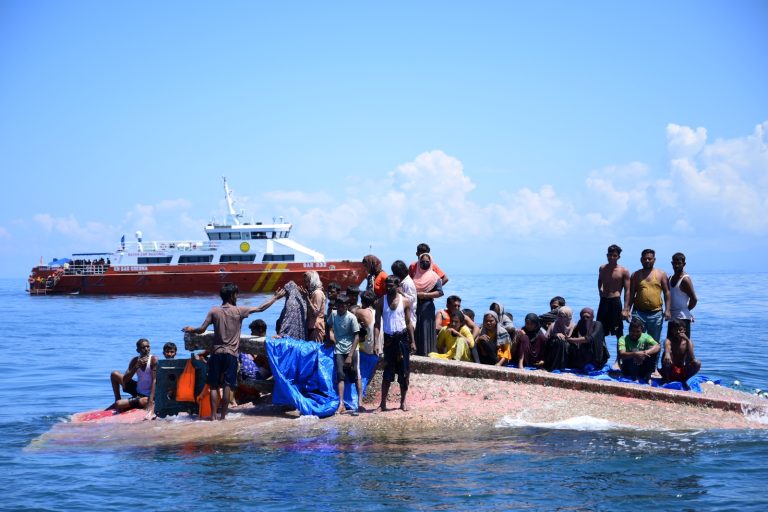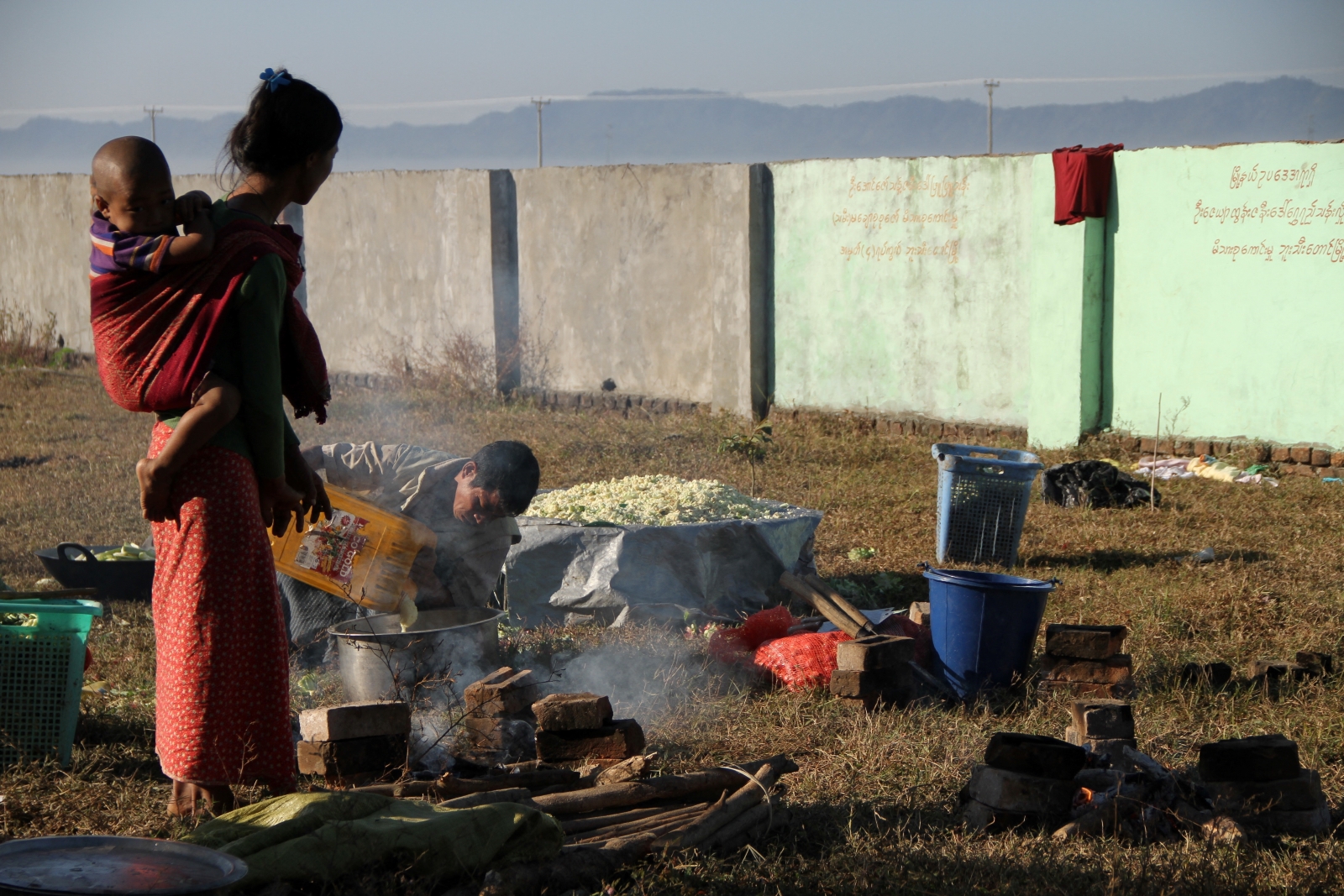By AIDAN JONES & HLA-HLA HTAY | AFP
YANGON — Myanmar troops on Monday searched for dozens of missing Hindu villagers feared dead after the discovery of a grave containing 28 corpses in Rakhine state, evidence of what the army says is a massacre by Rohingya militants.
Northern Rakhine has been ravaged by communal violence since Rohingya insurgents staged deadly raids on police posts on August 25, unleashing an army crackdown that has displaced hundreds of thousands of civilians.
The vast majority — more than 430,000 — are Rohingya Muslims who have fled across the border to Bangladesh from a military campaign which the UN says likely amounts to ethnic cleansing of the stateless minority.
But tens of thousands of ethnic Rakhine, and the region’s small population of Hindus, have also been internally displaced, saying they were attacked by Rohingya militants.
Support more independent journalism like this. Sign up to be a Frontier member.
On Sunday the army said it had discovered two mud pits filled with 28 Hindu corpses, including women and children, outside the village of Ye Baw Kyaw.
“The security troops continue searching for remaining Hindu people around the places of the pits,” said a statement posted on Senior General Min Aung Hlaing’s Facebook page Monday, blaming Rohingya militants for the killings.
Displaced Hindus from the area told AFP last week that Rohingya fighters stormed into their communities on August 25, killing many and taking others into the forest.
They showed AFP a list of 102 people from two villages — Ye Baw Kyaw, where the bodies were found, and Taung Ywar — feared dead by distraught relatives, who wept as they described the bloodshed.
A Hindu community leader in the area, Ni Maul, confirmed to AFP that the search was going on.
“Soldiers and police are here with us to find the rest of the bodies around this area,” he said, adding that authorities are still working to identify the 28 corpses exhumed on Sunday.
With the government blocking access to the conflict zone, it is difficult to verify the maelstrom of accusations that have further fuelled ethnic hatreds in Rakhine.
But the army has steadfastly blamed violence on the Rohingya — a Muslim minority it has been trying for years to eject from Myanmar — while highlighting the suffering of other ethnic groups swept up in the violence.
The focal point of the unrest, Maungdaw District, was once home to a fragile mosaic of religious communities, dominated by the Rohingya.
Vast swathes of the border region are now completely emptied of Muslim residents.
Frightened and dispossessed ethnic Rakhine Buddhists and Hindus, who have largely fled south, say they see no future alongside their former Muslim neighbours.
“I do not dare go back to the village,” said Kyaw Kyaw Naing, one of hundreds of displaced Hindus sheltering in a derelict football stadium in Sittwe.
“We still do not know yet how many of those dead bodies include relatives from our camp,” added the 34-year-old, whose Hindu name is Shu Bown.
In Bangladesh, relief agencies are struggling to meet the vast needs of the Rohingya cramming into shanties in Cox’s Bazar, an influx the UN has described as the “fastest and most urgent refugee emergency in the world”.







